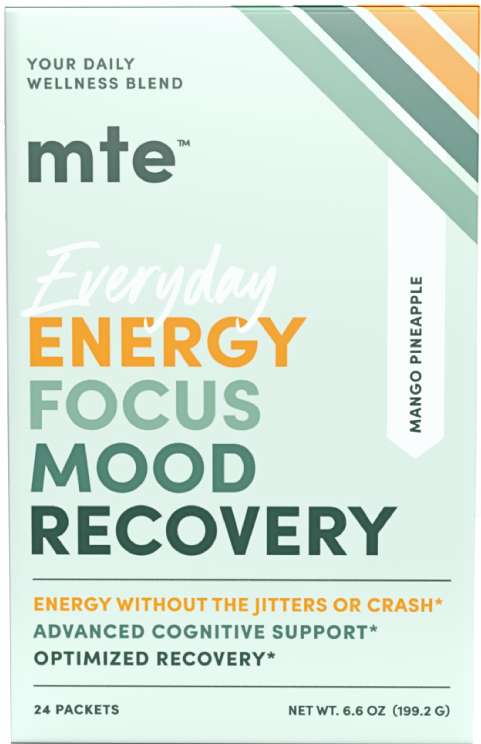
10 Tips to Overcome the Midday Slump Without Coffee
You don’t even need to glance at the clock to know it’s 2 PM because your body is shutting down like clockwork. Your eyelids feel heavy, your focus is gone, and productivity feels like a distant memory. You’re tempted to reach for another cup of coffee, but you know how that story ends – jitters now, no sleep later.
You might think this crash is just part of life. While it’s true that our natural body rhythms play a role, the midday slump is also deeply tied to lifestyle choices, such as poor sleep, terrible diet, minimal exercise, and inadequate hydration.
The good news is that you don’t need to rely on caffeine to power through. Let’s explore how to beat the midday crash with science-backed strategies, including mental focus drinks and other proven ways to reclaim your afternoons.
Why Do We Experience the Midday Slump?
The midday slump is a physiological response amplified by lifestyle habits. Understanding why it happens requires looking at the mechanisms at play in your body and how your daily choices contribute.
Your Natural Circadian Rhythm
The circadian rhythm, your internal 24-hour clock, regulates energy levels throughout the day. This cycle naturally creates a dip in alertness between 1 PM and 3 PM, regardless of how much sleep you got the night before.
During this window, your body temperature drops slightly, which signals a need for rest or lower energy output. This mechanism is a throwback to our evolutionary need for a midday rest during hot afternoons.
Blood Sugar Spikes and Crashes
What you eat for breakfast and lunch has a significant impact on your energy. A meal high in refined carbs or sugars causes a rapid spike in blood sugar levels, which gives you a quick energy boost. However, your body reacts by releasing insulin, which can lead to a sharp blood sugar crash shortly after. This crash leaves you feeling lethargic, foggy, and in need of a nap.
Dehydration and Electrolyte Imbalance
Even mild dehydration (a loss of 1-2% of the body’s water) can impair brain function and reduce energy levels.
Water helps regulate blood flow, maintain oxygen delivery to muscles and the brain, and support enzymatic reactions critical to energy production. If you’re not drinking enough water or replenishing electrolytes, your body struggles to function optimally, which leads to fatigue.
Sleep Quality and Quantity
Without adequate deep and REM sleep, your brain struggles to regulate hormones like cortisol and melatonin, which leaves you more prone to daytime drowsiness. Even small disruptions, like an irregular sleep schedule or late-night screen use, can throw your energy levels off balance.
Dietary Deficiencies
A lack of essential nutrients, such as iron, magnesium, or B vitamins, can leave you feeling tired. That’s because these nutrients play vital roles in oxygen transportation (iron), energy metabolism (B vitamins), and muscle and nerve function (magnesium).
If your diet is low in whole, nutrient-dense foods, your body lacks the fuel it needs to keep you energized throughout the day.
Lack of Physical Activity
Movement increases blood flow and oxygen delivery to your brain and muscles, which helps maintain energy levels. A sedentary lifestyle slows your metabolism, reduces circulation, and may even disrupt your sleep patterns. Spending long hours sitting, especially without movement breaks, compounds fatigue and brain fog.
Caffeine Overreliance
Ironically, caffeine, the go-to solution for many, can worsen your midday slump. While caffeine temporarily blocks adenosine, the chemical responsible for making you feel tired, it doesn’t eliminate it.
Once the caffeine wears off, adenosine floods your system, making the crash feel even worse. Over time, tolerance to caffeine also reduces its effectiveness, which leads to a cycle of dependence.
Stress and Cortisol Dysregulation
Stress causes your body to release cortisol, a hormone that prepares you for “fight or flight.” Chronic stress keeps cortisol levels elevated, which disrupts your natural energy production.
This disbalance can lead to poor sleep, increased reliance on sugar or caffeine, and mental fatigue – all factors that intensify the midday crash.
Post-Lunch Dip
After eating, your body diverts energy to digestion, particularly if you consume a large, heavy, or carb-heavy meal. This process pulls blood away from your brain and muscles and contributes to feelings of sluggishness.
Environmental Factors
Your surroundings also play a role. Poor lighting, stale air, and a lack of natural light exposure can dampen your mood and energy. Bright natural light signals your body to stay alert, while dim, artificial lighting can trigger drowsiness.
10 Caffeine-Free Tips to Overcome the Midday Crash
The midday slump doesn’t stand a chance when you’re armed with actionable, science-backed tips to keep your energy and productivity high. Here are some strategies you can try to create a productive afternoon routine:
1. Drink More Water
Dehydration is a common culprit of fatigue, and it’s easy to underestimate how much water your body actually needs. That’s why you should start your day by drinking a glass of water, ideally 12-16 ounces.
To keep it interesting, add a slice of lemon or a splash of electrolyte powder. A hydrated body means better oxygen and nutrient delivery to your brain and muscles, which translates to more energy and focus.
2. Enjoy a Healthy Snack
If you feel less productive and alert, you can try to combat it with a healthy snack that combines protein, healthy fats, and complex carbohydrates. Eat a handful of nuts and seeds, a piece of fruit with nut butter, or Greek yogurt with granola.
These snacks provide sustained energy without the blood sugar crash that comes from sugary or processed options. Keep them portioned and ready to go to avoid reaching for vending machine snacks in a pinch.
3. Take a Power Nap
A 5-15 minute nap can recharge your brain and improve cognitive function without leaving you groggy.
So, instead of reaching for another cup of coffee, you can set an alarm, find a quiet spot, and let yourself drift off briefly. If you’re at work and a nap isn’t possible, try resting your eyes and practicing mindfulness for 10 minutes to simulate the effects of a quick nap.
4. Go Out for a Short Walk
Stepping outside for a 10-15 minute walk can help boost circulation, increase oxygen flow, and expose you to natural light (which helps reset your internal clock). Aim for a green space, as research shows that being in nature can reduce stress and improve mental clarity.
5. Engage in a Two-Minute High-Intensity Workout
Sometimes, a burst of physical activity is all you need to shake off the brain fog of the midday slump. A quick two-minute high-intensity workout, like jumping jacks, burpees, or even running in place, can increase blood flow, release endorphins, and wake up your body and mind.
The key is intensity. Give it your all for just a short period. You’ll feel reinvigorated without breaking a full sweat, which makes it easy to dive back into your tasks.
6. Try a Mental Focus Drink
Caffeine-free mental focus drinks, like those packed with nootropics, adaptogens, and superfoods (yes, we’re talking about MTE), can provide a steady energy boost without the jitters or afternoon crash.
Look for drinks for focus with ingredients like ashwagandha, L-theanine, or saffron, which support alertness, mood, and calm energy. Prepare your drink mid-afternoon as part of a productive routine to help you feel refreshed and clear-headed for the rest of the day.
7. Practice Breathing Exercises
Breathing exercises are a simple and powerful tool to reset your energy and focus. Techniques like box breathing or the 4-7-8 method can calm your nervous system, reduce stress, and boost oxygen flow to your brain.
For example, try this: inhale deeply for four counts, hold your breath for seven counts, and exhale slowly for eight counts. Repeat for a few minutes to feel more centered and alert.
8. Prioritize a Quick Mental Reset
A mental reset doesn’t have to take long. Close your eyes, take a few deep breaths, and shift your focus away from work for a moment. Visualization exercises, like imagining a calm beach or a serene forest, can also help.
Alternatively, try jotting down a quick gratitude list or tackling a small, non-stressful task to clear mental clutter. These micro-breaks refresh your brain and prepare you to return to work with renewed focus.
9. Play Your Favorite Songs
Music has a direct impact on your brain’s reward and motivation systems. Upbeat and energetic songs can stimulate dopamine release to lift your mood and push you through the afternoon slump.
The key is to pick songs you love, whether they’re high-energy anthems or calming tunes for focused work. Create a midday playlist specifically tailored to snap you out of sluggishness and get you back on track.
Bonus tip: pair it with a quick activity, like tidying your desk or stretching, to double the refreshing effect.
10. Incorporate Natural Light Exposure
Even if you can’t take a full walk outside, stepping onto your balcony or simply sitting by a window for a few minutes can help. Natural light signals your brain to stay awake and alert by influencing the neurotransmitter levels that tell you to be active.
Take this opportunity to breathe deeply and soak in the light. It’s a small act that can make a big difference in overcoming your midday slump.
Boost Your Mental Focus in the Afternoon With MTE
The midday slump might feel inevitable, but it doesn’t have to be. With a mix of science-backed strategies and mindful habits, you can reclaim your afternoons and get back to doing what you do best without the caffeine crutch.
At MTE, we believe that great energy starts with great lifestyle choices. That’s why we designed our MTE to complement your wellness journey. This mental focus drink is packed with adaptogens, nootropics, and superfoods to help you stay sharp, productive, and calm without caffeine or sugar crashes.
Feeling stuck in the midday brain fog? Let MTE clear the way and make every hour your most productive hour.






